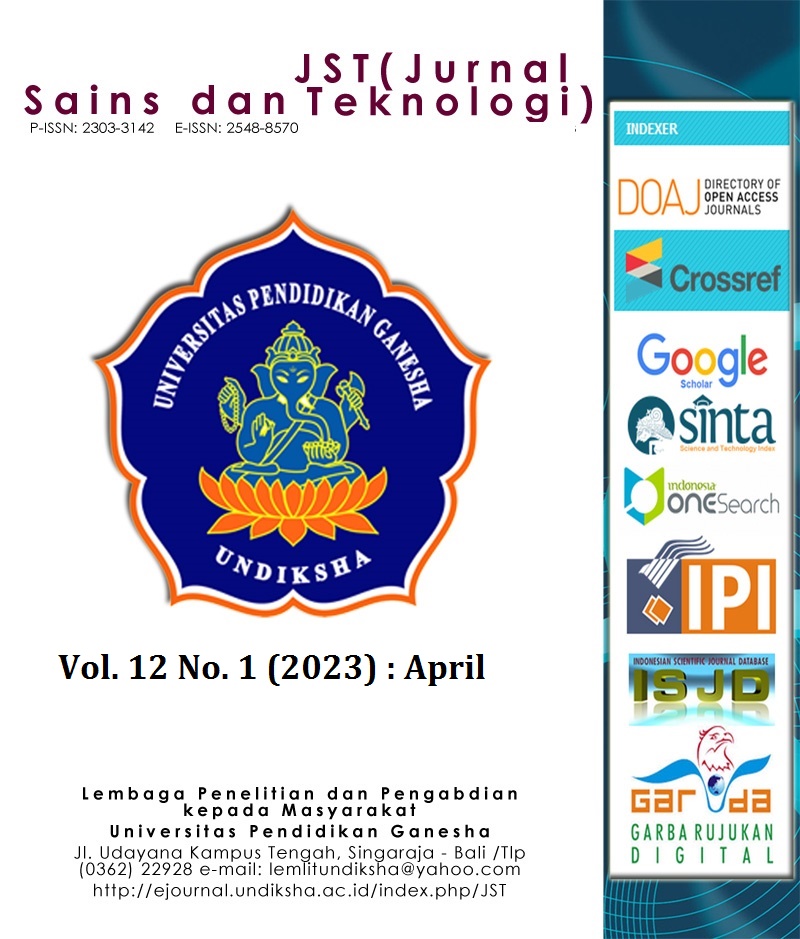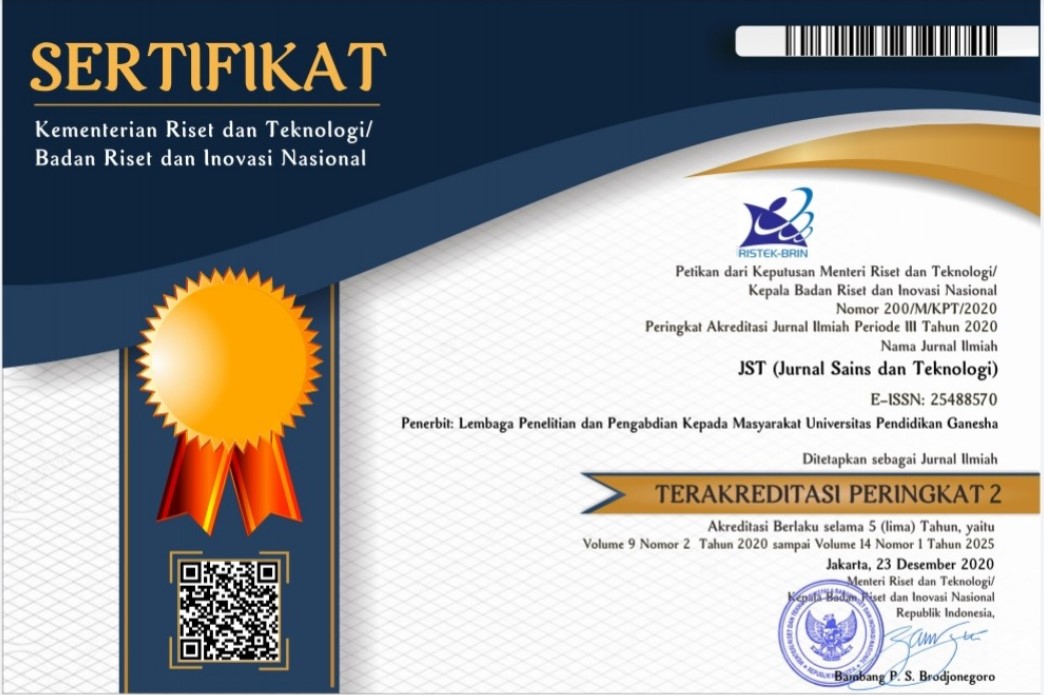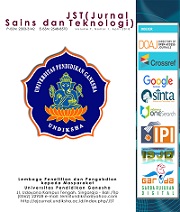Redesigning Family Education Media Website Using Design Thinking Method and System Usability Scale
DOI:
https://doi.org/10.23887/jstundiksha.v12i1.52791Kata Kunci:
Media, Education, Family, Design thinking, SUSAbstrak
Using educational media today is growing on several platforms, such as websites. Educational media application developers need to pay attention to a good interface so that user interaction with the application runs well and comfortably. One of the website-based family education media is mendadakparenting.com. We evaluate this website to users by paying attention to features and menus that are not yet available. This study aims to improve the design and increase user interest in using family education media as a website. The method we use in this research is the design thinking method. We have considered the choice of this method because it fits the approach to the user. The evaluation technique we use is an usability scale system. In the questionnaire, before the redesign, a score of 65.3 was got, so it was necessary to redesign. Then after we did a redesign with the addition of several features according to user input. The level of convenience based on evaluations to users regarding the design of the family education media website application resulted in a score of 77 with a high acceptance rate, the value scale was B, and it included the adjective rating for the good criteria.
Referensi
Ahmad, S., Rizawanti, R., Woodings, T., & Jalil, A. E. I. (2022). MCBRank Method to Improve Software Requirements Prioritization An Empirical Investigation. International Journal of Advanced Computer Science and Applications (IJACSA), 13(7), 215–222. https://doi.org/10.14569/IJACSA.2022.0130728.
Alomari, H. W., Ramasamy, V., Kiper, J. D., & Potvin, G. (2020). A User Interface (UI) and User eXperience (UX) evaluation framework for cyberlearning environments in computer science and software engineering education. Heliyon, 6(5), e03917. https://doi.org/10.1016/j.heliyon.2020.e03917.
Aprilia, I. H. N., Santosa, P. I., & Ferdiana, R. (2015). Pengujian Usability Website Menggunakan System Usability Scale Website Usability Testing using System Usability Scale. Jurnal IPTEK-KOM, 17(1), 31–38.
Avindo, R., & Safitri, D. (2021). Analisis Website STIMATA Menggunakan System Usability Scale (SUS). Jurnal Ilmiah Komputasi, 20(3), 217–221. https://doi.org/10.32409/jikstik.20.3.2776.
Buis, E. G., Ashby, S. R., & Kouwenberg, K. P. A. (2022). Increasing the UX Maturity Level of Clients : A Study of Best Practices in an Agile Environment Increasing the UX Maturity Level of Clients : A Study of Best Practices in an Agile Environment. Information and Software Technology, 107086. https://doi.org/10.1016/j.infsof.2022.107086.
Cajander, Å., Larusdottir, M., & Geiser, J. L. (2022). UX professionals’ learning and usage of UX methods in agile. Information and Software Technology, 151(November 2021), 107005. https://doi.org/10.1016/j.infsof.2022.107005.
Camacho, M. (2016). In Conversation David Kelley: From Design to Design Thinking at Stanford and IDEO. The Journal of Design, Economics, Adn Innovation, 2(1), 88–101. https://doi.org/10.1016/j.sheji.2016.01.009.
Ciccarelli, M., Brunzini, A., Papetti, A., & Germani, M. (2022). Interface and interaction design principles for Mixed Reality applications: the case of operator training in wire harness activities. Procedia Computer Science, 204(2021), 540–547. https://doi.org/10.1016/j.procs.2022.08.066.
Ebel, P., Orlovska, J., Hünemeyer, S., Wickman, C., Vogelsang, A., & Söderberg, R. (2021). Automotive UX design and data-driven development: Narrowing the gap to support practitioners. Transportation Research Interdisciplinary Perspectives, 11(April), 100455. https://doi.org/10.1016/j.trip.2021.100455.
Escanillan-Galera, K. M. P., & Vilela-Malabanan, C. M. (2019). Evaluating on user experience and user interface (UX/UI) of Enertrapp a mobile web energy monitoring system. Procedia Computer Science, 161, 1225–1232. https://doi.org/10.1016/j.procs.2019.11.236.
Fajriati, D. I., & Subhiyakto, E. R. (2022). Perancangan Mockup User Interface (Ui) Berdasarkan User Experience (Ux) Aplikasi Belajar Bahasa Arab Menggunakan Metode User Centered Design. Jurnal Teknik Informatika, 3(1), 82. https://doi.org/10.15408/jti.v14i2.21704.
Fassl, M., Grober, L., & Krombholz, K. (2021). Exploring user-centered security design for usable authentication ceremonies. In Conference on Human Factors in Computing Systems - Proceedings. https://doi.org/10.1145/3411764.3445164.
Hentati, A., Forsell, E., Ljótsson, B., Kaldo, V., Lindefors, N., & Kraepelien, M. (2021). The effect of user interface on treatment engagement in a self-guided digital problem-solving intervention: A randomized controlled trial. Internet Interventions, 26(May). https://doi.org/10.1016/j.invent.2021.100448.
Hidayat, O. S. (2021). Pengembangan Konten E - Learning Motion Graphic dan Website Wordpress pada Pembelajaran Warga di Sekolah Dasar. JURNAL BASICEDU, 5(6), 5436–5444. https://doi.org/10.31004/basicedu.v5i6.1668.
Jansson, M., Liisanantti, J., Ala-Kokko, T., & Reponen, J. (2022). The negative impact of interface design, customizability, inefficiency, malfunctions, and information retrieval on user experience: A national usability survey of ICU clinical information systems in Finland. International Journal of Medical Informatics, 159(October 2021), 104680. https://doi.org/10.1016/j.ijmedinf.2021.104680.
Kenny, U., Regan, Á., Hearne, D., & O’Meara, C. (2021). Empathising, defining and ideating with the farming community to develop a geotagged photo app for smart devices: A design thinking approach. Agricultural Systems, 194(September). https://doi.org/10.1016/j.agsy.2021.103248.
Kim, S., Trinidad, B., Mikesell, L., & Aakhus, M. (2020). Improving prognosis communication for patients facing complex medical treatment: A user-centered design approach. International Journal of Medical Informatics, 141(December 2019), 104147. https://doi.org/10.1016/j.ijmedinf.2020.104147.
Kopf, L. M., & Huh-Yoo, J. (2020). A User-Centered Design Approach to Developing a Voice Monitoring System for Disorder Prevention. Journal of Voice, 3200. https://doi.org/10.1016/j.jvoice.2020.10.015.
Mustafa, N., Kamalrudin, M., & Sidek, S. (2021). Security requirements template-based approach to improve the writing of complete security requirements. Journal of Theoretical and Applied Information Technology, 99(1), 1–12.
Nguyen, H. N., Lasa, G., Iriarte, I., Atxa, A., Unamuno, G., & Galfarsoro, G. (2022). Human-centered design for advanced services: A multidimensional design methodology. Advanced Engineering Informatics, 53(March), 101720. https://doi.org/10.1016/j.aei.2022.101720.
Pande, M., & Bharathi, S. V. (2020). Theoretical foundations of design thinking – A constructivism learning approach to design thinking. Thinking Skills and Creativity, 36(October 2019), 100637. https://doi.org/10.1016/j.tsc.2020.100637.
Pratiwi, M. R., Indrayani, H., & Amalia, S. (2020). Optimasi Pola Pengasuhan Digital dalam Pemenuhan Kebutuhan Informasi. Expose: Jurnal Ilmu Komunikasi, 3(1), 76. https://doi.org/10.33021/exp.v3i1.1012.
Ramadhan, D. W. (2019). PENGUJIAN USABILITY WEBSITE TIME EXCELINDO MENGGUNAKAN SYSTEM USABILITY SCALE (SUS) (sTUDI KASUS: WEBSITE TIME EXCELINDO). JIPI (Jurnal Ilmiah Penelitian Dan Pembelajaran Informatika), 4(2), 139. https://doi.org/10.29100/jipi.v4i2.977.
Roth, R. (2017). User Interface and User Experience (UI/UX) Design. Geographic Information Science & Technology Body of Knowledge, 2017(Q2). https://doi.org/10.22224/gistbok/2017.2.5.
Sembodo, F. G., Fitriana, G. F., & Prasetyo, N. A. (2021). Evaluasi Usability Website Shopee Menggunakan System Usability Scale (SUS). Journal of Applied Informatics and Computing, 5(2), 146–150. https://doi.org/10.30871/jaic.v5i2.3293.
Sim, G., Read, J., & Fitton, D. (2021). Introducing the CCI UX Playbook. Proceedings of Interaction Design and Children, IDC 2021, 695–697. https://doi.org/10.1145/3459990.3464486.
Suryawan, I. G. T., Satyawati, I. G. A. A. A., Purnama, I. W. A., & Arsana, I. M. D. P. (2022). Evaluasi Dan Redesign Website Menggunakan System Usability Scale Dan Automated Software Testing. JST (Jurnal Sains Dan Teknologi), 11(1), 18–28. https://doi.org/10.23887/jstundiksha.v11i1.40785.
Susanto, A. (2019). Evaluasi Kualitas Website STMIK Bina Bangsa Kendari Menggunakan Metode WebQual 4.0. Simkom, 4(2), 21–28. https://doi.org/10.51717/simkom.v4i2.34.
Suzianti, A., Wulandari, A. D., Yusuf, A. H., Belahakki, A., & Monika, F. (2020). Design Thinking Approach for Mobile Application Design of Disaster Mitigation Management. ACM International Conference Proceeding Series, 29–33. https://doi.org/10.1145/3379310.3379324.
Törnroth, S., Wikberg Nilsson, Å., & Luciani, A. (2022). Design thinking for the everyday aestheticisation of urban renewable energy. Design Studies, 79, 1–20. https://doi.org/10.1016/j.destud.2022.101096.
Welda, W., Putra, D. M. D. U., & Dirgayusari, A. M. (2020). Usability Testing Website Dengan Menggunakan Metode System Usability Scale (Sus)s. International Journal of Natural Science and Engineering, 4(3), 152. https://doi.org/10.23887/ijnse.v4i2.28864.
Unduhan
Diterbitkan
Cara Mengutip
Terbitan
Bagian
Lisensi
Hak Cipta (c) 2022 Egia Rosi Subhiyakto, Mutia Rahmi Pratiwi, Swita Amalia Hapsari

Artikel ini berlisensiCreative Commons Attribution-ShareAlike 4.0 International License.
Authors who publish with the Jurnal Sains dan Teknologi (JST) agree to the following terms:
- Authors retain copyright and grant the journal the right of first publication with the work simultaneously licensed under a Creative Commons Attribution License (CC BY-SA 4.0) that allows others to share the work with an acknowledgment of the work's authorship and initial publication in this journal.
- Authors are able to enter into separate, additional contractual arrangements for the non-exclusive distribution of the journal's published version of the work (e.g., post it to an institutional repository or publish it in a book), with an acknowledgment of its initial publication in this journal.
- Authors are permitted and encouraged to post their work online (e.g., in institutional repositories or on their website) prior to and during the submission process, as it can lead to productive exchanges, as well as earlier and greater citation of published work. (See The Effect of Open Access)
















